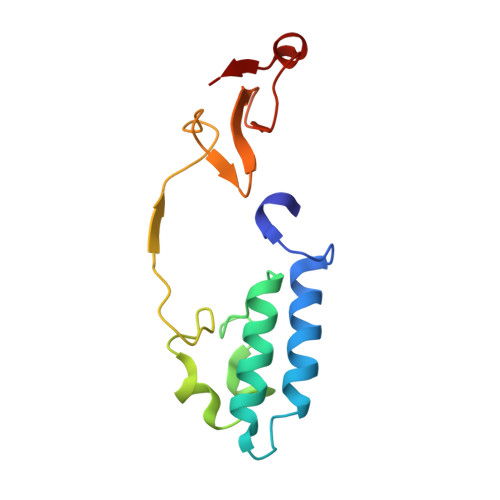Structure of the catalytic domain of the hepatitis C virus NS2-3 protease.
Lorenz, I.C., Marcotrigiano, J., Dentzer, T.G., Rice, C.M.(2006) Nature 442: 831-835
- PubMed: 16862121
- DOI: https://doi.org/10.1038/nature04975
- Primary Citation of Related Structures:
2HD0 - PubMed Abstract:
Hepatitis C virus is a major global health problem affecting an estimated 170 million people worldwide. Chronic infection is common and can lead to cirrhosis and liver cancer. There is no vaccine available and current therapies have met with limited success. The viral RNA genome encodes a polyprotein that includes two proteases essential for virus replication. The NS2-3 protease mediates a single cleavage at the NS2/NS3 junction, whereas the NS3-4A protease cleaves at four downstream sites in the polyprotein. NS3-4A is characterized as a serine protease with a chymotrypsin-like fold, but the enzymatic mechanism of the NS2-3 protease remains unresolved. Here we report the crystal structure of the catalytic domain of the NS2-3 protease at 2.3 A resolution. The structure reveals a dimeric cysteine protease with two composite active sites. For each active site, the catalytic histidine and glutamate residues are contributed by one monomer, and the nucleophilic cysteine by the other. The carboxy-terminal residues remain coordinated in the two active sites, predicting an inactive post-cleavage form. Proteolysis through formation of a composite active site occurs in the context of the viral polyprotein expressed in mammalian cells. These features offer unexpected insights into polyprotein processing by hepatitis C virus and new opportunities for antiviral drug design.
Organizational Affiliation:
Laboratory of Virology and Infectious Disease, Center for the Study of Hepatitis C, The Rockefeller University, 1230 York Avenue, New York, New York 10021, USA.
















